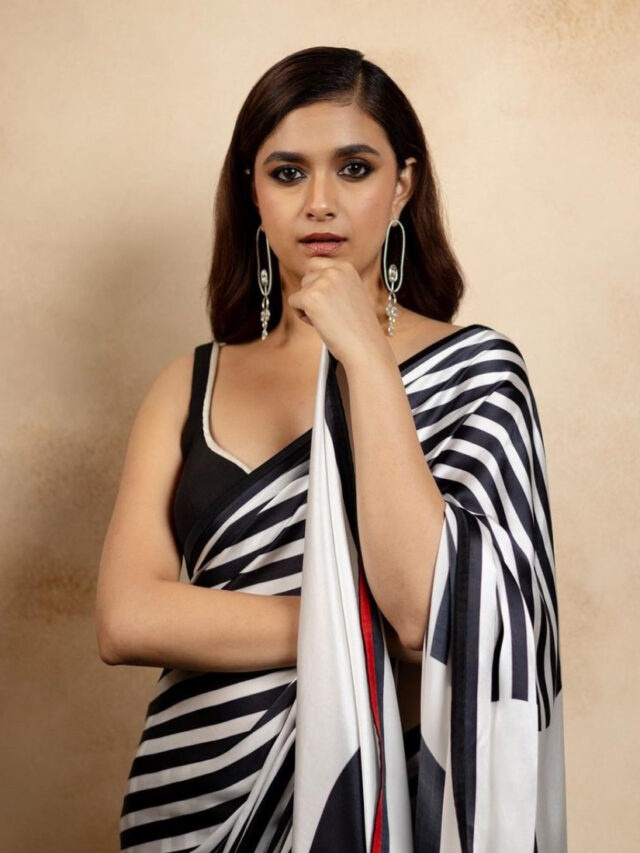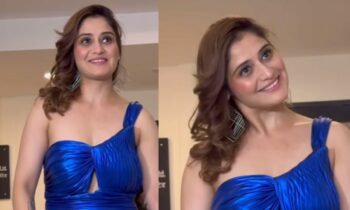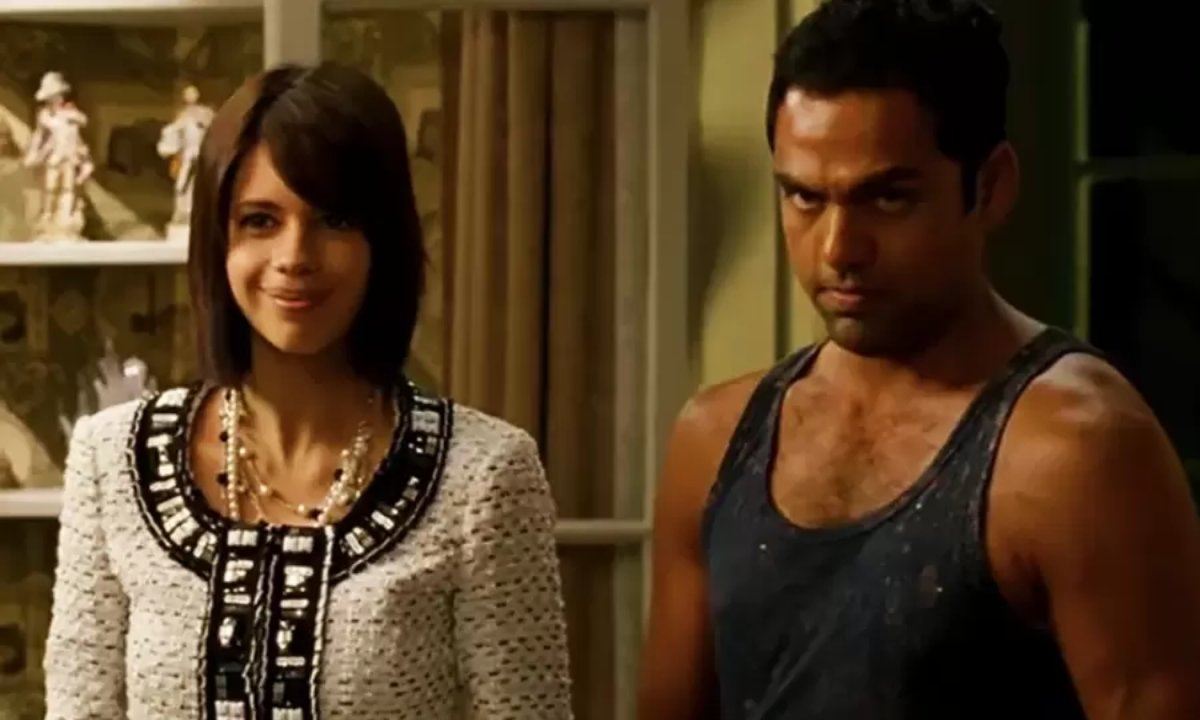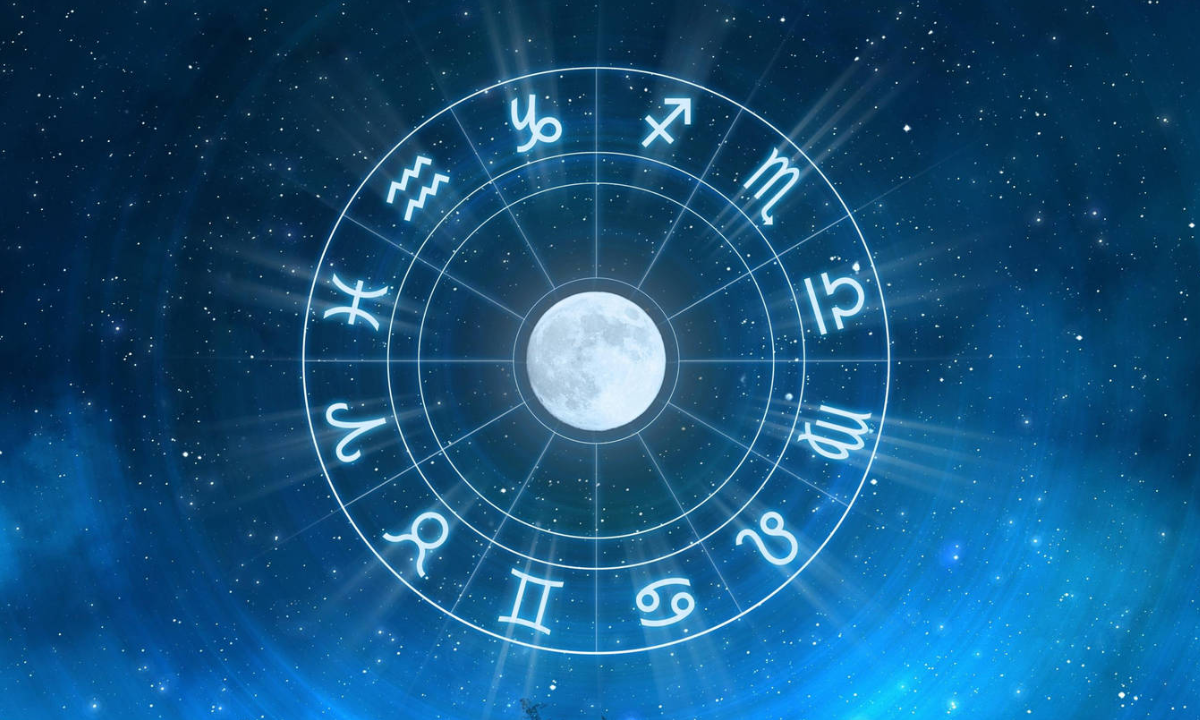‘Blonde’ Review: Ana de Armas As Marilyn Monroe Saves Andrew Dominik’s Exploitative Screenplay From Total Doom
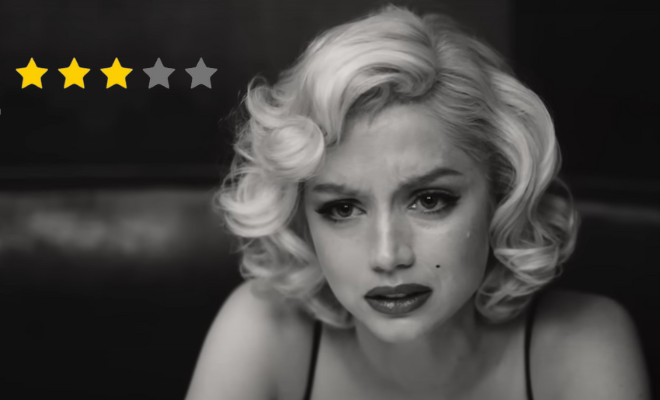
They say some things are better left a mystery as pondering over it too much will give you results you might not like as much. However, Hollywood seems to have never heard of it since, it time and again exploits one of its greatest icons, Marilyn Monroe, for creating content for its movies and TV shows. Joining the list is yet another male-gaze introspection of the actress through the lens of writer and director Andrew Dominik. His movie Blonde starring Ana de Armas as Marilyn Monroe is made up of rumours, scandals, public spectacles, shocking revelations, and one too many distressing moments.
Blonde is most definitely not a biopic but rather a fictional movie that looks into the life of Marilyn Monroe through a pipe hole. That pipe hole is Joyce Carol Oates’ 2000 book of the same name. In fact, having read the book and watched the almost 3-hour-long movie, I can say that the icon’s life leaks more in the pages than it does through Andrew Dominik’s lens. What Blonde essentially does is dig deep into the lows of the actress’ life in a highly non-realistic manner and as a result, all you are left with is an exceptionally talented Ana de Armas who grabs the audience’s attention with her spectacular portrayal of Marilyn Monroe while she drowns in her sorrows.
View this post on Instagram
Also Read: Kim Kardashian Defends Herself After Being Accused Of Ruining Marilyn Monroe’s Dress At The Met Gala
The movie begins with a young girl Norma Jeane Mortenson (played by Lily Fisher) who is traumatised by her mother – Gladys Pearl Baker (played by Julianne Nicholson) – who blames the girl for her absentee father. Her mother is emotionally unstable and tries to kill her own daughter by intentionally driving into a wildfire and when that fails, she tries to drown her in a bathtub. Even though her mother put her through a lot of emotional, physical, and mental trauma, Marilyn Monroe seeks her mother’s validation as a grown adult. She believes that finding her absent father will help with her mother’s mental state. Blonde here shows Norma Jeane from the perspective of her mother who rarely is sober and so the lens is hazy, shaky, and at a point, there is even a filter that smudges the image of the young girl at the edges.
View this post on Instagram
In the 2 hours and 47 minutes running of Blonde, we then see Norma Jeane through the people that adored and validated her – the men in her life, the fans who hypersexualised and objectified her, and men who claim that they have her best interest. It is heartbreaking to see that there are very few and rare moments where we see Marilyn Monroe from her own perspective because it is those moments that are blindingly breathtaking.
Andrew Dominik’s Blonde shows how Norma Jeane has created the personality of Marilyn Monroe to get the acceptance, validation, care, and love she always craved growing up. Whenever Norma Jeane appears on the screen she is an innocent woman who is always excited about receiving care and attention from people around. And that is strikingly different from the personality of Marilyn Monroe that she brings out whenever she is put in a tough spot. In a poetic sense, Marilyn Monroe is Norma Jeane’s armour and in the end also her undoing.
View this post on Instagram
Also Read: Ana De Armas Believes That There Is No Need For A Female Bond
From the Fox executive Darryl F. Zanuck (played by David Warshofsky) who takes undue advantage of Marilyn Monroe to her overbearing husbands – Arthur Miller (played by Adrien Brody), the playwright, and Bobby Cannavale (played by Joe DiMaggio), the ex-athlete, and the lustful lovers – Charles “Cass” Chaplin Jr. (played by Xavier Samuel) and Edward “Eddy” G (played by Evan Williams) – Marilyn Monroe is constantly stripped – both physically and mentally) by a male-centric perspective.
Some of the most rotten sequences of Blonde come in when the movie touches upon the alleged romantic affair that took place between President John F. Kennedy (played by Caspar Phillipson) and Marilyn Monroe. And the second sequence when Norma Jeane yearns to be a mother, after losing her children through abortion and miscarriage, has Marilyn Moroe talking to the fetus who eventually ends up talking back to her. And don’t even get me started on how problematic the scene is where Monroe’s fetus is not just talking back to her but also degrading and accusing her for its death.
Andrew Dominik’s Blonde also pays special attention to some of the dark moments in the life of Marilyn Monroe that makes you think as an audience about the role we play in creating an unsafe environment for actors. The film shows the struggle Norma Jeane endures as she gains the spotlight, the inappropriate attention she receives, and the roles that portray her as nothing more than just blonde and dumb.
View this post on Instagram
Also Read: ‘Blonde’ Trailer: Ana De Armas As Marilyn Monroe Transports Us Back In Time To Revisit Hollywood Legend’s Tragic Story
In fact, one of the best sequences in Blonde comes when Norma Jeane has a breakdown on the sets of a film and she struggles to keep up with the image she is being forced to live. Though Norma speaks lines that emphasize this image she is living, she is unable to accept it truly and completely. You can see her split between the love and adoration she receives and the contrary image who is her real self that is constantly growing and wanting to come out. It is during her this struggle that she seeks the help of Whitey (played by Toby Huss), her makeup person, to help her bring Marilyn Monroe out. Of all the people around her and in her life, Whitey is the only that seems to truly understand Norma and wants what’s best for her. In fact, her relationship with Whitey is the only relationship in which you see Norma Jeane as a person and not as Hollywood’s greatest icon.
And after all this, there’s the ending of Blonde that is absolutely remarkable. After the camera being closely held to her face for almost two hours, the camera shoots the final moments of Marilyn Monroe from a respectable distance. The final shot of the movie makes you feel as though the camera was being physically removed from its place and placed on the floor. It feels as though with that the filmmaker is saying, ‘the show’s over’.
One of the biggest criticism of Blonde is the fact that the screenplay of the movie doesn’t have the perfect landing – after almost 3 hours of watching Marilyn Monroe go through life, it is unclear as to what aspect of her was Andrew Dominik trying to highlight. It gets a bit tedious when you’re just about to be emotionally invested in a particular sequence but then the gear shifts and you’re taken to a whole different sequence. In a way, I feel what the movie does is uses the icon and her story to remind us of the time when Hollywood was brutally cruel to women (maybe still is).
Also Read: From ‘The Seven Year Itch’ Dress To The Sparkling Pink Gown, Iconic Marilyn Monroe Style Moments We Hope To See In Ana de Armas’ ‘Blonde’
To be honest, the perspective of Blonde is not entirely personal. It is not Marilyn Monroe or Norma Jeane speaking to us but someone who has insider knowledge of her life. The movie fails to explore the depths of the person the icon really was. With the movie having such a beautiful blend of truth and rumours, I believe the filmmaker could have dug a little deep and gone inside the skin and psyche of the icon to understand her story.
View this post on Instagram
Ana de Armas As Marilyn Monroe Stole The Show
The movie has some of the finest performances by the entire cast but there were two that stood out – Toby Huss who played Whitey, Monroe’s makeup person and of course, Ana de Armas, who plays Marilyn Monroe. Toby Huss perfectly essayed the character of someone that loved Monroe and felt not pity but empathy towards her. He was there to piece her back every time she broke. And speaking of Ana de Armas, she is one of the main reasons why Blonde deserves a watch and all the accolades that come with it. She was extraordinary as Marilyn Monroe. As Monroe, Ana de Armas smiled to hide the pain and recreated that iconic laugh that was in the end a wall the icon had created to protect herself. From the physicality to the million-dollar smile, Ana de Armas’ performance was flawless and raw and perfect in every aspect. The ease with which she brought Norma Jeane’s pain forward through the character of Marilyn Monroe (even at times when she seemed to be her happiest self) was downright commendable and Oscar-winning.
The Verdict
To conclude, Blonde is dark, torturous, and to some extent even triggering. The life of Marilyn Monroe is a puzzle and the movie highlights how some puzzles are not meant to be put together. Having watched the movie, one thing is clear, the film didn’t want to erase the mystery that surrounds the iconic star and it most definitely doesn’t. The movie reels the audiences in enough to know more about her but keeps them far away so as to not taint the allure surrounding her.
Blonde is currently streaming on Netflix.






